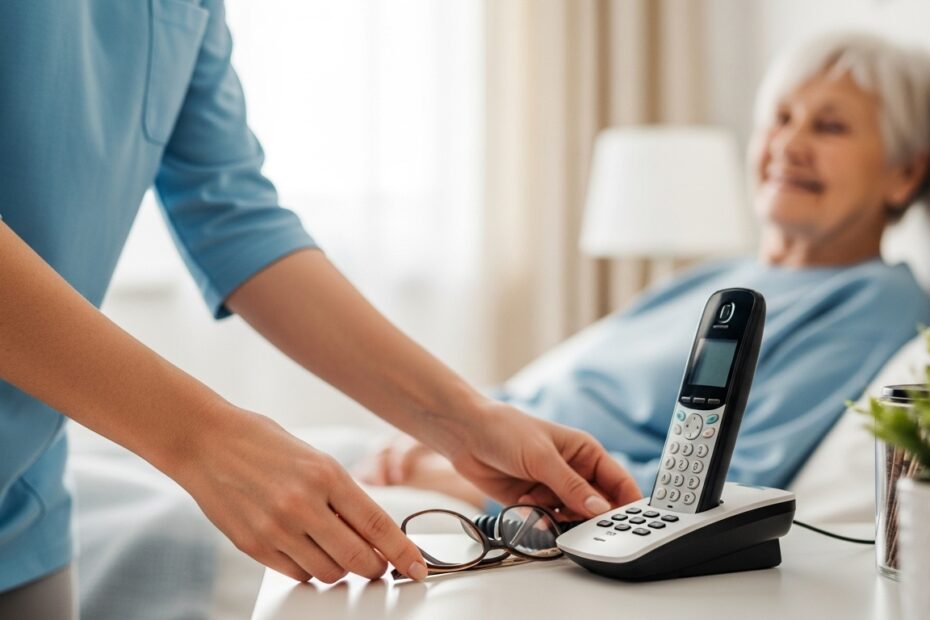For seniors and their loved ones, the fear of a fall is a constant concern. A fall can lead to serious injuries, loss of independence, and a significant decline in quality of life. While many factors contribute to fall risk, a structured approach can make prevention manageable and effective. One of the most respected strategies, originally developed for healthcare settings, is the “5 P’s of Falls Prevention.”
This evidence-based model provides a simple yet comprehensive checklist to address the most common reasons a person might fall. By regularly considering these five key areas, caregivers and seniors can work together to create a safer environment and foster confidence. The 5 P’s are: Pain, Potty, Position, Periphery, and Pump.[1][2][3]
Let’s explore each “P” and how you can apply it in a home setting.
1. Pain
Unmanaged pain is a major contributor to falls. When a person is in pain, they may move differently, guard their movements, or experience weakness and instability, all of which can easily lead to a loss of balance.
How to Address Pain:
- Assess Regularly: Don’t wait for pain to become severe. Ask, “Are you experiencing any pain?” or “What is your pain level right now?”
- Manage Pain Effectively: Work with a doctor to ensure pain is well-managed, whether through medication, physical therapy, or other treatments. If pain medication is used, be aware of side effects like dizziness or drowsiness that could also increase fall risk.[3]
- Encourage Honesty: Create an environment where the senior feels comfortable reporting pain without feeling like they are complaining. Untreated pain is a significant safety risk.
2. Potty (Personal Needs)
Rushing to the bathroom is one of the most common scenarios leading to a fall.[1] Urgency, especially at night or when mobility is limited, creates a dangerous situation. Addressing toileting needs proactively is a cornerstone of fall prevention.
How to Address Potty/Personal Needs:
- Offer Regular Assistance: Don’t wait to be asked. Offer help getting to the toilet on a regular schedule, such as every couple of hours, and especially before bed and upon waking.
- Make the Bathroom Safe: Ensure the path to the bathroom is clear and well-lit with nightlights.[1] Install grab bars near the toilet and in the shower, and consider a raised toilet seat to make sitting and standing easier.
- Be Prepared: Keep any necessary items like commodes or urinals clean and easily accessible.
3. Position
An uncomfortable or unsafe position can lead to a person trying to adjust themselves without assistance, increasing their fall risk.[2][4] This is especially critical for seniors who spend a lot of time in a bed or chair.
How to Address Position:
- Check for Comfort: Regularly ask, “Are you comfortable?” or “Do you need help repositioning yourself?”
- Use Supportive Devices: Ensure pillows, wedges, or other support devices are correctly placed to maintain a comfortable and safe position.[5]
- Ensure Safe Transfers: When helping someone move from a bed to a chair or vice versa, ensure they are stable and supported throughout the transfer.
4. Periphery
The “periphery” refers to the immediate environment and ensuring essential items are within easy reach.[2][5] If a senior has to stretch, bend, or get up for a commonly used item, it creates an unnecessary risk.
How to Address Periphery:
- Anticipate Needs: Before leaving the room, check to see if the person has everything they need.
- Create a “Reach Zone”: Place essential items like the phone, TV remote, a glass of water, reading glasses, and books on a stable bedside table.[6]
- Keep Call Lights Close: If a call light or alert system is used, ensure it is always within arm’s reach.
5. Pump
In a clinical setting, “Pump” refers to IV pumps and other medical equipment.[4] At home, this can be adapted to mean all Plugs and Equipment. Tripping over cords or having necessary medical equipment malfunction can be a serious hazard.
How to Address Pumps (Plugs & Equipment):
- Cord Management: Keep electrical cords for lamps, medical devices, and phones tucked away and out of walkways.
- Equipment Checks: If using medical equipment like oxygen concentrators or lift chairs, ensure they are functioning correctly and that the senior knows how to use them safely.
- Clear the Floor: Limit clutter and ensure all equipment is placed in a way that does not create a tripping hazard.[7]
By proactively and consistently checking the 5 P’s, you can transform a reactive approach to safety into a preventative one, helping seniors avoid costly falls and live more securely and independently.
Join Us on Youtube – Senior Recuperate
